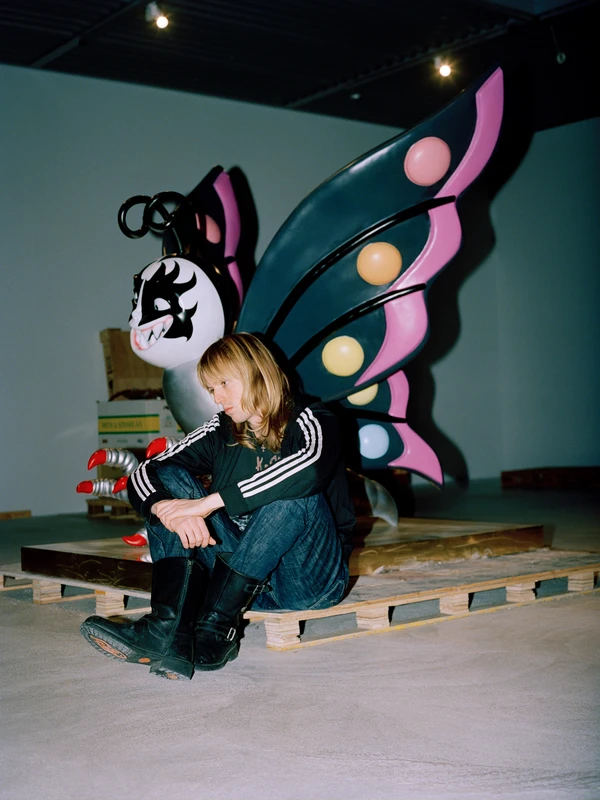I Want to Believe
5 Oct-18 Nov 2023
PV 5 Oct 2023, 6-8pm


Albion Jeune, a new contemporary art gallery founded and directed by Lucca Hue-Williams, presents I Want to Believe, by multimedia artist, Esben Weile Kjær (b. 1992, Copenhagen). Consisting of stained-glass paintings and alien skull sculptures, the exhibition accompanies the artist’s latest performance, which shares the same name.
Kjær’s performances, stained glass, and installations examine his generation’s construction of selfhood and the rise of popular culture and technology in determining one’s experience of community and authenticity. Through his theatrical visual language, he presents a new performative archetype of popular culture that explores the relationship between art, identity, and commercialisation.
I Want to Believe brings together a significant body of work that refers to the artist’s performance practice.
Debuting at 180 Strand, the accompanying performance is presented in three parts as a deconstructed baroque ballet. The work recalls a danse macabre, a medieval motif of various characters dancing towards the grave, which served as an allegory for the inevitability of death and the impermanence of earthly things. As alluded to in the title, the performance is representative of the individual pursuit to find meaning and a sense of belonging in one’s life, whether that be a religious, creative, or intellectual entity. Ironically, the title is also a reference to the infamous statement from the UFO movement, posing the question of what notions of ‘authenticity’ and ‘belonging’ might extend to.
Comprised of stained-glass panes, each wall-based work encompasses a narrative-filled freeze shot from select past performances by Kjær. Through the reappropriation of the work’s central motifs, his practice questions the notion of an ‘iconic image’ in popular culture, and it’s circulation and repetition. These mise-en-scènes typically involve hyperbolic character stereotypes interacting with kitsch installations, while adorned in fetish-like attire that alludes to a specific community. Throughout Kjær’s performances, a performer takes countless smartphone images, which the artist reproduces to form the original composition of the stained-glass work. Through this process, and enabled by the agency of the camera operator, power inconsistencies are evoked between the voyeur and the exhibitionist.
In this manner, the work addresses the shift in power dynamics that began to occur after Tim Berners-Lee’s invention of the web in 1989. This was the start of the information era of total awareness. The omnipresence of social media and technology conveys the inextricable relationship between quotidian life and the online sphere.1 In each stained-glass work, the characters present the age-old ritual of self-identification through a contemporary form of performativity, while being watched and critiqued by the masses.
Though Kjær lives in Denmark, his practice is heavily informed by “The American Dream” and the aesthetics of the entertainment industry. His curiosity is sparked by historic rituals, youth culture, and the consumerist meltdown in the West. The staged formal elements and scenes in I Want to Believe combined with the medium of stained glass investigate the relationship between today’s event economy and evangelical traditions. Indeed, the stained-glass windows of a church could even be considered the oldest form of marketing in the West. Through these connotations, the show oscillates between the two cultures and their respective communities, each with their own set of rules and expectations. As the artist states, ‘Stained glass is the old school LED screen, the traditional form of branding and advertising.’
Kjær plays with these vibrant, translucent surfaces, which he holds up to us, to his performers, his peers, and ultimately to his own generation. A generation that is said to be narcissistic, disenchanted, and unfulfilled. The viewer is invited to engage in this process, contemplating their own unsteady place within life’s highly digitized passing procession.